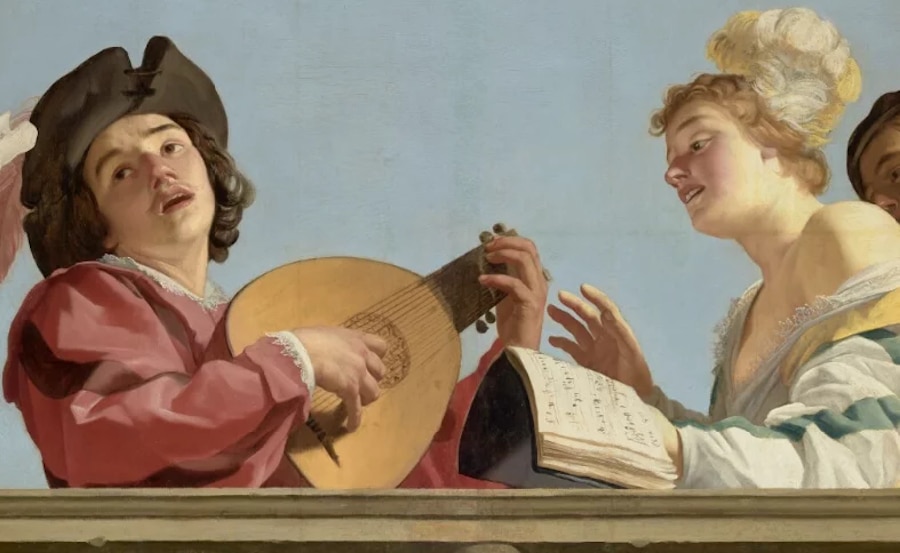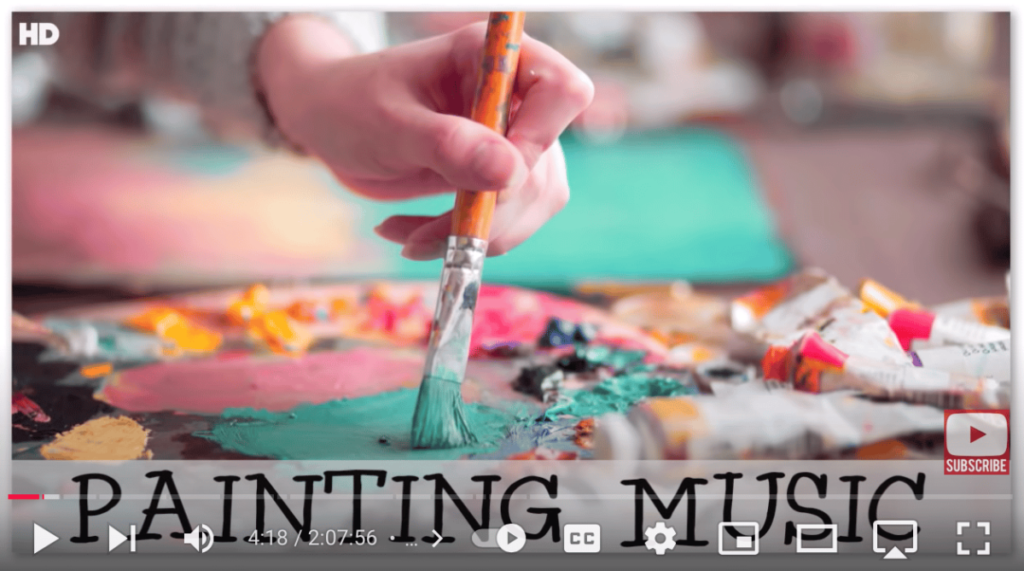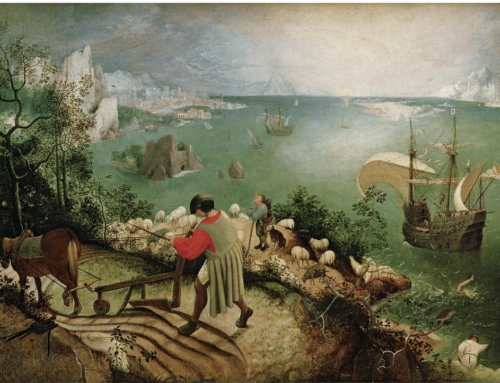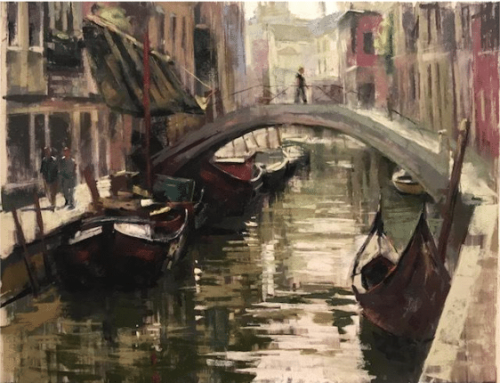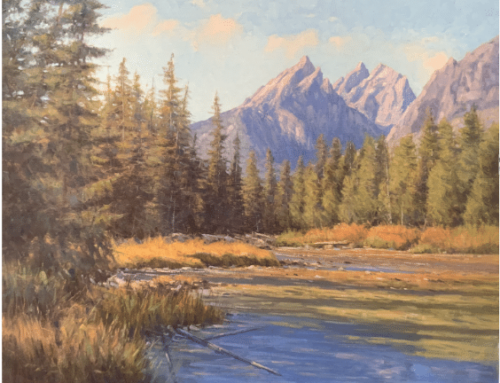“Color is like music. The palette is an instrument that can be orchestrated to build form.”
– American painter John Sloan

Virgil Elliott, detail from Portrait of Sabrina Kalleen (full size 54 x 36 inches, 1992)
What does ultramarine blue sound like to you?
For me, it’s a low, sustained chord in the bass register (or it would be, if paint were music), something produced perhaps by tubas, cellos, and violas. If you were to place over a field of that blue a series of small bright dots, what you’d add would amount to something like a melody: sharp staccato notes from the piccolos, for example, if the dots are made with cadmium yellow, or smoother, mellower woodwind phrases (if maybe the dots are a creamy violet, just a shade or two lighter than the blue).
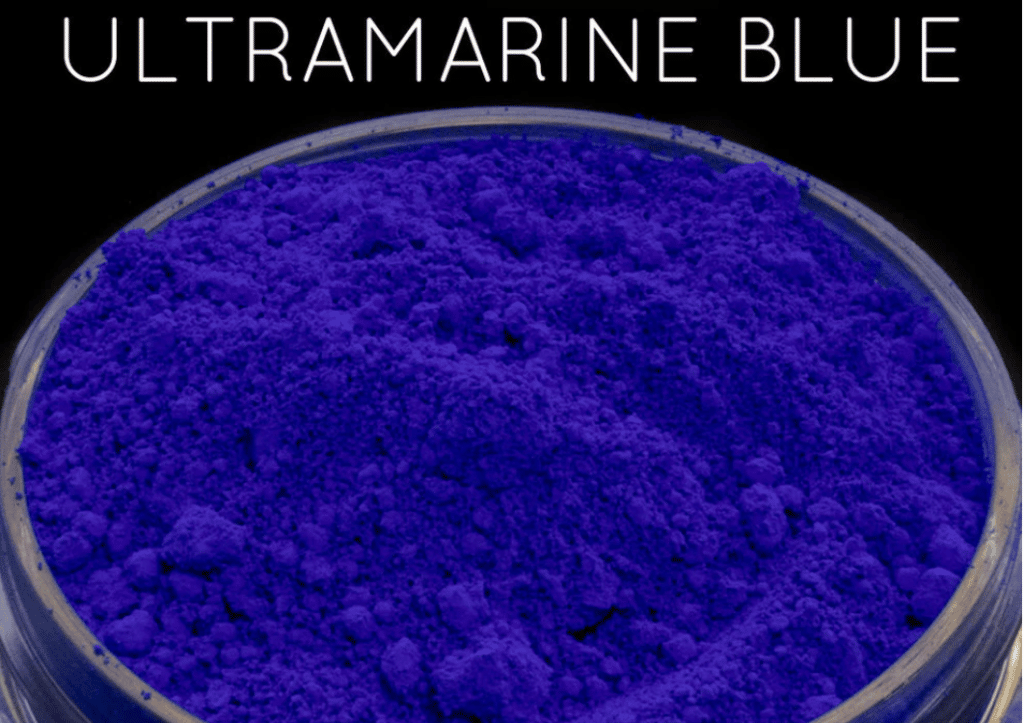
Ultramarine blue pigment (photo from Madmicas printmakers)
There is a wide-open dimension between music and the visual that goes back to the Pythagoreans of ancient Greece. It was they who declared, “The eyes are made for astronomy, the ears for harmony, and these are sister sciences.” For them, the numeric basis of music and the mathematical proportions of creation were one and the same (hence the phrase, “the music of the spheres”).
“Our hearing of colors is so precise,” said Wassily Kandinsky, the most influential pioneer on full abstraction in Western painting. “Color is a means of exerting a direct influence upon the soul. Colour is the keyboard. The eye is the hammer. The soul is the piano with its many strings.”
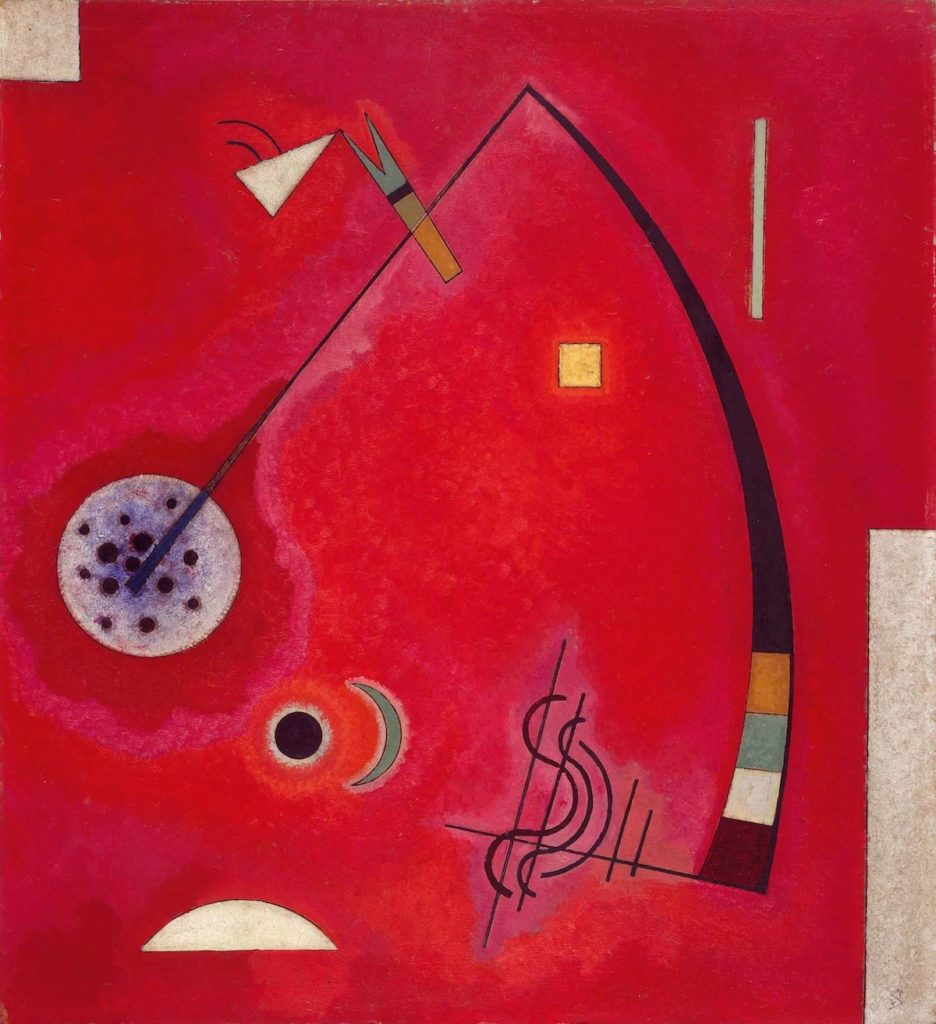
Kandinsky, Taut at an Angle, 1930
Art emerges intuitively, directly from the “inner necessity” of the heart and soul, by means of the unconscious mind, and art’s goal, he wrote in Concerning the Spiritual in Art, is to lift humanity to ever greater heights of spiritual growth. The music metaphor helped Kandinsky talk about artwork as a kind of mystical science poised between the material and the immaterial realms.
“The artist is the hand that purposely sets the soul vibrating by means of this or that (music al) key,” he wrote. “Thus it is clear that the harmony of colors can only be based upon the principle of purposefully touching the human soul.”

Virgil Elliott, The Songstress, 2008
Whether or not you embrace the idea that spirituality can be approached in color or musical notes, thinking about painting in terms of music opens a whole new way of understanding what we do when we paint. The “sisterhood” of the two arts of painting and music points to a refreshing way of thinking about the affects that color choice and paint handling can have upon viewers.
“Beauty in art is the delicious notes of color one against the other,” declared early 20th century American painter Charles Hawthorne. “It is as fine as music and just the same thing, one tone in relation to another tone.”
The Most Popular Painting Soundtrack on the Web
Silence is nice for painting but sometimes music is even better. With a nearly a million views, this painting music YouTube video offers two hours of relaxing classical piano music that’s great for generating a meditative mood for moving the brush. Liszt, Debussy, Mozart, Chopin … the hits keep coming AND it loops at the end and starts over.
In the Paint (and the music)
-Chris

